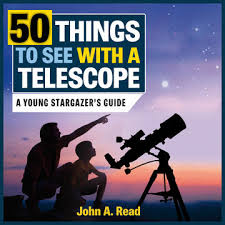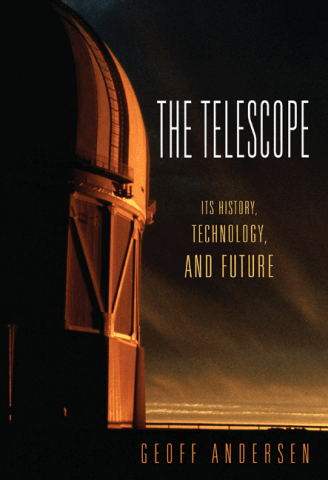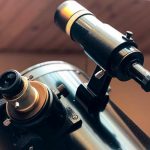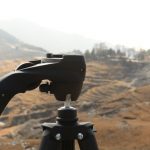How to Choose Your First Telescope
Telescopes are a lot of fun. However, with the many options, brands, models and alternatives available, finding the perfect one can be tricky. Being the first time, you could be lost trying to understand which telescope to buy or what the various telescope terms mean.
Besides, there are several factors to consider in addition to the bewildering options to choose from. All this certainly culminates in unexplained anxiety with no idea of the best telescope.
To begin, there has to be a reason that primes one to look for a telescope. The reason ought to be met at the end of telescope search. Just to mention, scopes come in different and varying optical flavors, compound instruments, reflectors, and refractors.
Note that each design has its strengths and weaknesses as well. Besides, each is well-suited to work best in specific conditions. Therefore, ensure that your search guides you to find the appropriate design.

Picking a type
Even though there are many forms and designs of telescopes, there are three general types. They include:
Refractors
This type features a lens in front of the tube. Such scopes require minimal effort to maintain. However, their cost increase with increasing size of the lens. Refractor telescopes are further classified into two categories. They include apochromats and achromats. Apochromats are a preferred type as they offer a better optical quality despite being pricey.
Pros
- Their simple design makes them easy to use
- Works excellently for objects on earth
- Has a sealed tube which protects optics
- It is sturdy thus minimal maintenance
Cons
- Not an ideal choice for faint objects
- Less value compared to reflectors
- It can be quite heavy and bulky
Reflectors
Whereas refractors use a lens for illumination, reflectors gather light using a curved mirror positioned at the back end of the telescope’s main tube. They are a preferred type due to their affordability. However, they require more maintenance as their optics can fall out of their fixed alignment.
Pros
- Great for viewing faint objects
- Has very high image quality
- Of more value than refractors
- Is relatively compact and light weight
Cons
- Has an open tube that may collect dust
- Requires regular maintenance
- Is not best for earth objects
Compound telescopes
This telescope type uses both mirrors and lenses to gather light. Compared to reflectors and refractors, they are quite portable as their tubes are more compact and lighter. Popular designs of the compound telescopes include the Maksutov- Cassegrains and Schmidt-Cassegrains.
Pros
- Excellent for viewing faint objects
- Great for objects on earth
- Has a sealed tube that protects the optics
- Excellent for astrophotography
Cons
- Is relatively expensive
- Large and bulky
- Has a second mirror that reduces brightness
Deciding the best type could be the biggest challenge. Therefore, pay much attention to the optical quality of each type and design. Also, choose a stable mount that makes it easy to maneuver around the sky. It is also prudent to try out the telescope before purchasing or settling for one. You can do this by visiting a local astronomy club.

Telescope features
Before purchasing a telescope, understand several lingos associated with telescopes. They include:
Aperture
It is notably the most important telescope feature. Also called the objective, it is the diameter of the light-gathering mirror or lens. This feature is not only important for gathering light but also facilitates seeing much detail. Larger apertures result in the collection of more light thus faint, and small objects can be seen clearly. This diameter is recorded and expressed in millimeters or inches.
As a rule of the thumb, a telescope ought to have an aperture of 2.8 inches or more.
The mount
Described as the telescope’s most under-appreciated feature, it is an equally important part of the telescope responsible for the sturdiness of the telescope. Superb optics and excellent resolution can be let down by a poor mount. Several telescopes come with packaged tripods or mounts. Smaller scopes have a mounting block that enables them to be attached to a standard photo tripod using a single screw.
Various types of telescopes mounts are available. Whereas some are manual, computerized mounts, which point automatically to the selected target are available too. However, for your first scope, going for a basic mount is prudent. There are two basic mounts available. They include the altaz and the equatorial.
The altaz stands for altitude and azimuth. It is the simplest mount which allows the scope to move on a parallel base to the ground. In altitude, it can move up or down and left and right in azimuth.
On the other hand, the equatorial mount is much different and complex to use. It has one of its positions tilted to the latitudes. All in all, the sturdier the mount, the better.
The focal length
This primarily refers to the distance between the mirror or the primary lens and the point where the object being observed is being brought into focus. It is an important determinant as to how well a telescope magnifies the object. As a beginner, it is important that you choose a telescope with a large focal length and aperture.
Magnification
Magnification of any telescope is determined by the focal length and the eyepiece. This is the ability to see objects clearly and differently. Note that upgrading the magnification is possible by finding a better e yepiece lens.
yepiece lens.
Other key factors to consider include:
- Availability of computer control
- The finderscope
- The cost
- Focuser
Conclusion
Using the tips above can guide in finding the best beginner telescope. Just to mention, from several trials and reviews, the Celestron Nexstar 130SLT was thought to be the best beginner telescope. It is a refractor telescope that gathers immense light and has amazing image quality. It is also an affordable scope for beginners.
It has an excellent SkyAlign computer control that makes it easy to track and find objects in the sky. Astronomy aficionados who have tried this scope describe it to be working flawlessly with extra sharp images.
Other undoubted features of this scope include stability, tracking simplicity and excellent build capacity. It is the market leader for telescopes with a two-year warranty and exceptional customer service.






















